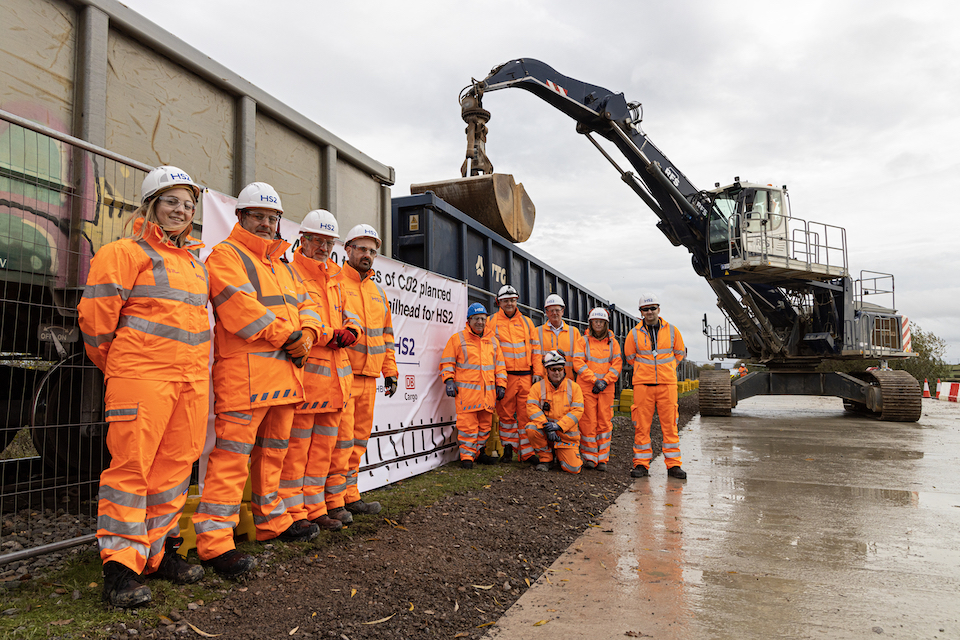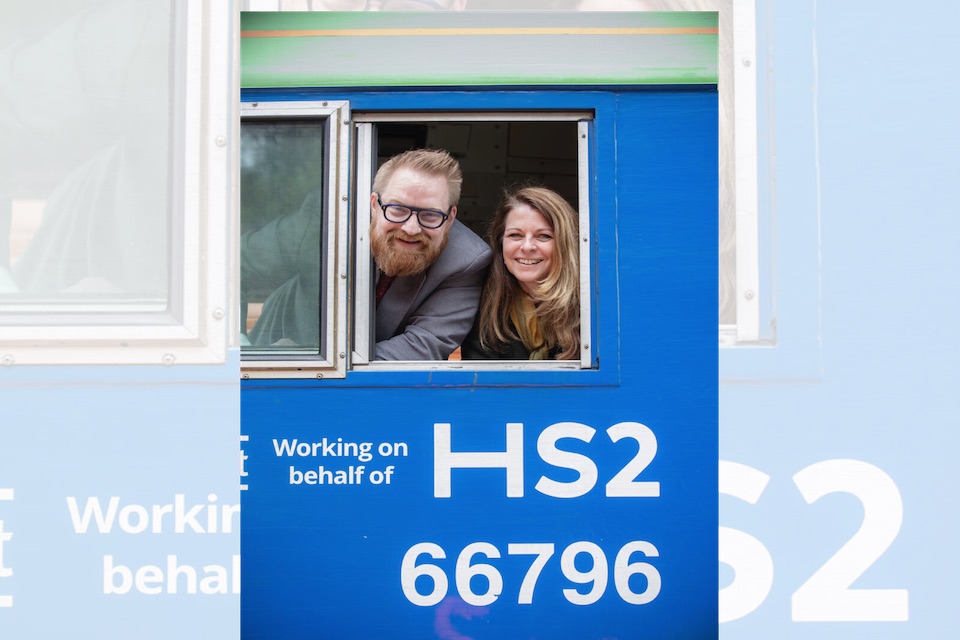Ten million tons moved by rail HS2 and counting

The high-speed rail project HS2 reached the important milestone of moving ten million tonnes of construction materials by rail. The accomplishment is particularly important considering the project reached its target way ahead of its time, which was set in 2030. The part played by the rail freight sector in the construction thus far has been celebrated, with every intention of continuing in the same manner.
The ‘Materials by Rail’ programme launched in 2020, within the context of the HS2 construction, aimed to move ten million tonnes of aggregate and spoil to and from construction sites, taking up to 1,5 million lorries off the roads, using up to 15,000 freight trains by 2030. However, the project has achieved this target in just over two years. Now, HS2 is expected to move 20 million tonnes of aggregate across the first phase of the programme, removing three million lorries from the strategic road network on 30,000 freight trains.
Make deliveries by rail where possible
HS2 Limited, the company formed to deliver the massive project, is currently working to construct the core route between London and Birmingham. Much of the construction materials are being delivered by rail from source quarries in the North West of England. The demand, along with supplies for the booming London construction industry, is providing rail freight operators with a steady stream of work, delivering a round-the-clock timetable of trains to distribution terminals in the South East. However, with costs spiralling, the government in London has ‘paused’ construction of the latter stages, north from Birmingham to Crewe and Manchester. Ministers have also said the core section will be built more slowly, possibly delaying the first trains by several years.

Nevertheless, HS2 remains confident it will not only need all the contacted support already agreed – some 15,000 trains – but that the eventual requirement will be something like double that number of movements. “Our ‘Materials by Rail’ strategy plays a vital role in our objective to cut carbon right across the project”, said David Speight, Delivery Director for Main Works Civils Phase One at HS2 Ltd. “We’re working hard with our joint venture companies, Network Rail, freight operators and aggregate suppliers to make deliveries by rail where possible. In addition to cutting carbon emissions, HS2’s ‘Materials by Rail’ strategy is creating jobs and skills opportunities right across the country, along with minimising impacts to communities along the line of route.”
Project remains committed to its objectives
To deliver the new railway, the project has been working strategically with joint venture partners, Network Rail, freight operators, and building materials companies to achieve this milestone. All of HS2’s main works contractors have contributed to the ten million tonnes milestone – Align, BBV, BBVS, EKFB, and Skanska Costain STRABAG. “The ‘Materials by Rail’ strategy is a crucial element of HS2’s objective to cut carbon emissions throughout the project”, says a project statement.

The project has already created nearly 30,000 jobs and supported around 2,500 British-based businesses. However, the recent government announcement to pause the development of the latter stages of HS2 may have an impact on these numbers. The government’s decision has been criticised by some as a move that could harm the UK’s infrastructure and economic prospects. Despite this, the project remains committed to its objectives and is likely to continue making progress in reducing carbon emissions. That’s the first good news for the rail freight sector, in quite some time, in what has become a pivotal project.
You just read one of our premium articles free of charge
Want full access? Take advantage of our exclusive offer





